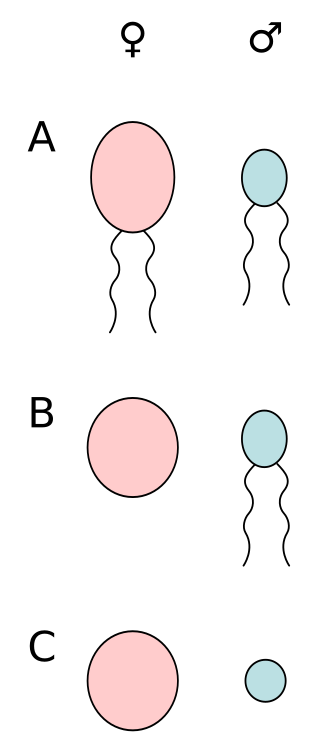
Neural Darwinism is a biological, and more specifically Darwinian and selectionist, approach to understanding global brain function, originally proposed by American biologist, researcher and Nobel-Prize recipient Gerald Maurice Edelman. Edelman's 1987 book Neural Darwinism introduced the public to the theory of neuronal group selection (TNGS) – which is the core theory underlying Edelman's explanation of global brain function.

Stuart Alan Kauffman is an American medical doctor, theoretical biologist, and complex systems researcher who studies the origin of life on Earth. He was a professor at the University of Chicago, University of Pennsylvania, and University of Calgary. He is currently emeritus professor of biochemistry at the University of Pennsylvania and affiliate faculty at the Institute for Systems Biology. He has a number of awards including a MacArthur Fellowship and a Wiener Medal.

A generegulatory network (GRN) is a collection of molecular regulators that interact with each other and with other substances in the cell to govern the gene expression levels of mRNA and proteins which, in turn, determine the function of the cell. GRN also play a central role in morphogenesis, the creation of body structures, which in turn is central to evolutionary developmental biology (evo-devo).
Evolvability is defined as the capacity of a system for adaptive evolution. Evolvability is the ability of a population of organisms to not merely generate genetic diversity, but to generate adaptive genetic diversity, and thereby evolve through natural selection.

Anisogamy is a form of sexual reproduction that involves the union or fusion of two gametes that differ in size and/or form. The smaller gamete is male, a sperm cell, whereas the larger gamete is female, typically an egg cell. Anisogamy is predominant among multicellular organisms. In both plants and animals, gamete size difference is the fundamental difference between females and males.
In artificial intelligence, artificial immune systems (AIS) are a class of computationally intelligent, rule-based machine learning systems inspired by the principles and processes of the vertebrate immune system. The algorithms are typically modeled after the immune system's characteristics of learning and memory for use in problem-solving.
In biology, altruism refers to behaviour by an individual that increases the fitness of another individual while decreasing their own. Altruism in this sense is different from the philosophical concept of altruism, in which an action would only be called "altruistic" if it was done with the conscious intention of helping another. In the behavioural sense, there is no such requirement. As such, it is not evaluated in moral terms—it is the consequences of an action for reproductive fitness that determine whether the action is considered altruistic, not the intentions, if any, with which the action is performed.

Molecular biophysics is a rapidly evolving interdisciplinary area of research that combines concepts in physics, chemistry, engineering, mathematics and biology. It seeks to understand biomolecular systems and explain biological function in terms of molecular structure, structural organization, and dynamic behaviour at various levels of complexity. This discipline covers topics such as the measurement of molecular forces, molecular associations, allosteric interactions, Brownian motion, and cable theory. Additional areas of study can be found on Outline of Biophysics. The discipline has required development of specialized equipment and procedures capable of imaging and manipulating minute living structures, as well as novel experimental approaches.
Paulien Hogeweg is a Dutch theoretical biologist and complex systems researcher studying biological systems as dynamic information processing systems at many interconnected levels. In 1970, together with Ben Hesper, she defined the term bioinformatics as "the study of informatic processes in biotic systems".
The evolution of biological complexity is one important outcome of the process of evolution. Evolution has produced some remarkably complex organisms – although the actual level of complexity is very hard to define or measure accurately in biology, with properties such as gene content, the number of cell types or morphology all proposed as possible metrics.
Artificial development, also known as artificial embryogeny or machine intelligence or computational development, is an area of computer science and engineering concerned with computational models motivated by genotype–phenotype mappings in biological systems. Artificial development is often considered a sub-field of evolutionary computation, although the principles of artificial development have also been used within stand-alone computational models.
An ecological network is a representation of the biotic interactions in an ecosystem, in which species (nodes) are connected by pairwise interactions (links). These interactions can be trophic or symbiotic. Ecological networks are used to describe and compare the structures of real ecosystems, while network models are used to investigate the effects of network structure on properties such as ecosystem stability.
Fractal analysis is assessing fractal characteristics of data. It consists of several methods to assign a fractal dimension and other fractal characteristics to a dataset which may be a theoretical dataset, or a pattern or signal extracted from phenomena including topography, natural geometric objects, ecology and aquatic sciences, sound, market fluctuations, heart rates, frequency domain in electroencephalography signals, digital images, molecular motion, and data science. Fractal analysis is now widely used in all areas of science. An important limitation of fractal analysis is that arriving at an empirically determined fractal dimension does not necessarily prove that a pattern is fractal; rather, other essential characteristics have to be considered. Fractal analysis is valuable in expanding our knowledge of the structure and function of various systems, and as a potential tool to mathematically assess novel areas of study. Fractal calculus was formulated which is a generalization of ordinary calculus.
An organism is defined in a medical dictionary as any living thing that functions as an individual. Such a definition raises more problems than it solves, not least because the concept of an individual is also difficult. Many criteria, few of them widely accepted, have been proposed to define what is an organism. Among the commonest is that an organism has autonomous reproduction, growth, and metabolism. This would exclude viruses, despite that fact that they evolve like organisms. Other problematic cases include colonial organisms; a colony of eusocial insects is organised adaptively, and has germ-soma specialisation, with some insects reproducing, others not, like cells in an animal's body. The body of a siphonophore, a jelly-like marine animal, is composed of organism-like zooids, but the whole structure looks and functions much like an animal such as a jellyfish, the parts collaborating to provide the functions of the colonial organism.

In the biological sciences, the term bow tie is a recent concept that tries to grasp the essence of some operational and functional structures observed in biological organisms and other kinds of complex and self-organizing systems. In general, bow tie architectures refer to ordered and recurrent structures that often underlie complex technological or biological systems, and that are capable of conferring them a balance among efficiency, robustness and evolvability. In other words, bow ties are able to take into account a great diversity of inputs, showing a much smaller diversity in the protocols and processes able to elaborate these inputs, and finally an extremely heterogeneous diversity of outputs. These architectures thus manage a wide range of inputs through a core (knot) constituted by a limited number of elements. In such structures, inputs are conveyed into a sort of funnel, towards a "synthesis" core, where they can be duly organized, processed and managed by means of protocols, and from where, in turn, a variety of outputs, or responses, is propagated.

Integrated information theory (IIT) proposes a mathematical model for the consciousness of a system. It comprises a framework ultimately intended to explain why some physical systems are conscious, and to be capable of providing a concrete inference about whether any physical system is conscious, to what degree, and what particular experience it is having; why they feel the particular way they do in particular states, and what it would take for other physical systems to be conscious.

In evolutionary biology, robustness of a biological system is the persistence of a certain characteristic or trait in a system under perturbations or conditions of uncertainty. Robustness in development is known as canalization. According to the kind of perturbation involved, robustness can be classified as mutational, environmental, recombinational, or behavioral robustness etc. Robustness is achieved through the combination of many genetic and molecular mechanisms and can evolve by either direct or indirect selection. Several model systems have been developed to experimentally study robustness and its evolutionary consequences.

Epistasis is a phenomenon in genetics in which the effect of a gene mutation is dependent on the presence or absence of mutations in one or more other genes, respectively termed modifier genes. In other words, the effect of the mutation is dependent on the genetic background in which it appears. Epistatic mutations therefore have different effects on their own than when they occur together. Originally, the term epistasis specifically meant that the effect of a gene variant is masked by that of different gene.
Cell-based models are mathematical models that represent biological cells as discrete entities. Within the field of computational biology they are often simply called agent-based models of which they are a specific application and they are used for simulating the biomechanics of multicellular structures such as tissues. to study the influence of these behaviors on how tissues are organised in time and space. Their main advantage is the easy integration of cell level processes such as cell division, intracellular processes and single-cell variability within a cell population.
Constructive neutral evolution(CNE) is a theory that seeks to explain how complex systems can evolve through neutral transitions and spread through a population by chance fixation (genetic drift). Constructive neutral evolution is a competitor for both adaptationist explanations for the emergence of complex traits and hypotheses positing that a complex trait emerged as a response to a deleterious development in an organism. Constructive neutral evolution often leads to irreversible or "irremediable" complexity and produces systems which, instead of being finely adapted for performing a task, represent an excess complexity that has been described with terms such as "runaway bureaucracy" or even a "Rube Goldberg machine".









